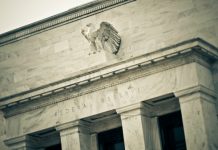We all know that the forex and stock markets are related, so it’s of course a good idea for forex traders to keep an eye on what equities are doing. But there are a couple of circumstances that are coinciding this quarter that make this relationship especially pronounced. The stock market, particularly in the United States, could give us some insight into what to expect in the currency markets.
What’s going on?
To get a better understanding of the situation, we have to remember that one of the key ways the stock and currency markets are connected is through bonds. When bond prices fall, for example, then investors pile into that currency to buy. This pushes up the price of the currency with respect to others. At the same time, investors leave the stock market to buy bonds as well. This means the stock market goes down.
Hence, the standard inverse relationship between currencies and the stock market. Now, that doesn’t always line up exactly, because it depends on why the price of bonds have gone down. The other main factor is risk sentiment. Stocks are higher risk, so investors will get out of the stock market and buy bonds when there is a risk-off market.
What’s driving the underlying market
The issue is that the bond market right now is highly distorted, particularly in the US and Japan. This is because over the last couple of years, the regulators have been intervening in the market. Almost all central banks and governments have done this, but some more than others. Which is why there could be a discrepancy in the reaction from currencies.
During covid, governments issued massive amounts of debt in the form of bonds. That would normally force the interest rate higher, due to supply and demand. But central banks stepped in to buy bonds in order to force interest rates down. That creates an artificial situation in the bond market.
Tracking the distortion
The natural situation is that bond yields represent relative risk. That means the longer the bond term, the higher the interest rate. This is called the “bond yield curve”. But central banks have stepped in to “control” the yield curve, such as the BOJ, or the BOE. The US bond curve is “inverted”; that is, short-term debt has a higher interest rate than long-term debt, which reflects expectations of central bank policy.
Why it matters
Investors are going to put their money where they believe there is the best risk-reward ratio. Bonds are low risk compared to stocks, so the higher the interest rate, the more interest there is in selling stocks. If the central bank is distorting the market, then investors have a different incentive structure. This can lead to a run-up in stocks, like in 2020-2021 when conditions aren’t so good; and then a drop in the stock market when conditions are improving, like in 2022.
So, central bank policy can outweigh economic data. The Fed is expected to slow or stop its rate hikes sometime this quarter. With the Fed keeping policy steady, then the natural dynamics of the market could return. Which means the stock market could return to its more usual role of forecasting sentiment. Which in turn provides insight into how much demand there is for bonds, and whether or not a currency in particular will appreciate or weaken.











